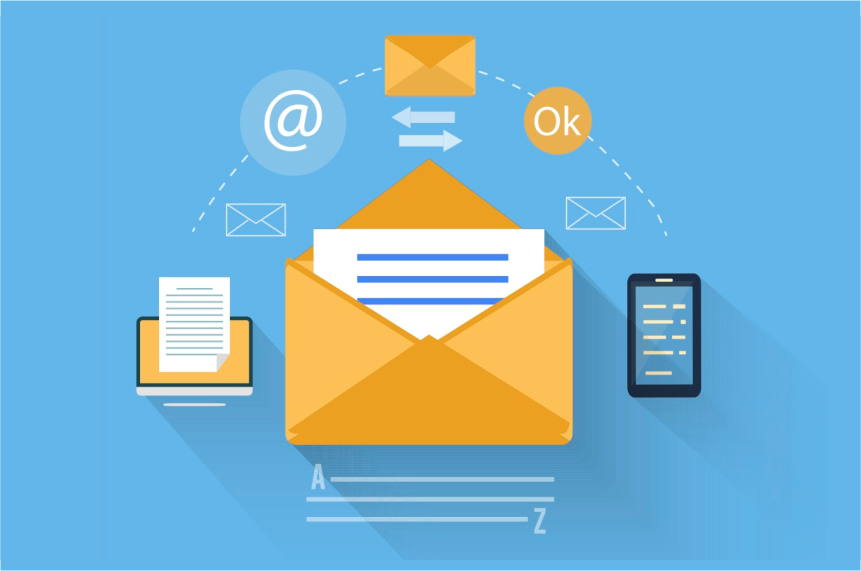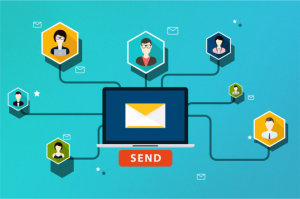Statistics show that email marketing outperforms social media in terms of the number of users and how engaged these users are with your business.
Given that it has the potential to be such an important medium, we’ve looked at some of the key areas you need to consider to ensure your startup business makes the most of this channel.
Email marketing best practices?
When running an email campaign for marketing purposes there are certain regulations around what can and can’t be done. Most are straightforward and will help, not hinder your e-marketing.
The main rules are around permissions; you need to ensure individual customers have given you permission to send them marketing emails.
Email marketing best practice is to clearly indicate who you are, why you are contacting the receiver and any conditions related to sales or promotions.
It’s also important to note that you are required to provide an ‘unsubscribe’ option on all emails sent to customers for marketing purposes.

Creating an email campaign strategy
Creating a successful and effective email campaign requires having a strategy. There are a number of elements to consider in order for your emails to reach the right people and for them to be paid attention to.
1. Who is your email audience?
Before you decide on what to say, you first need to know who you are speaking to. Segmenting your mailing list can help make your message more suited to individual audiences and therefore more effective.
Think about where you got a customer’s details from – did they hand over their email while buying online? Then these customers might be interested in promotional offers on new products.
Did you meet them at a trade event? Then maybe these customers want some more general information about your business.
2. What are the objectives of your email marketing campaign?
To begin with it’s important to outline the purpose of your email campaign. This could be to increase sales (directly via your website, or indirectly by encouraging footfall to your shop or premises), to shorten sales cycles by giving your customers reminders or information to encourage them to take an action, or simply to drive more visitors to your business’ website or blog.
Email marketing can be a great way of keeping engaged with your customers especially if you are using a subscription business model.
If you want to keep your audience engaged with your business you need to provide them with content that they want. This content can be blogs, promotional offers or invites to great events you are attending.
Once you have this decided you can begin to build your content to suit those objectives and meet your audience’s expectations.
Remember a great email campaign does not ensure an increase in sales, your business will also need an effective online shop in order to convert visitors into consumers.
3. How often can I send e-marketing messages?
The frequency you send out email marketing campaigns depends on what type of content you are sending out. A newsletter needs to be full of informative and engaging content, this can be time consuming so should be sent out less frequently.
Promotional offers can be sent out more frequently to keep customers aware of your business’ great deals.
4. When should I send out e-marketing messages?
When you send your email should depend on the demographic of your audience. At Start Up Loans, after exhaustive testing, we found that more people open our monthly customer newsletter on Tuesday afternoons.
Our advice is to test and evaluate, most email marketing tools have analytical tools that allow you to measure the number of people on your email database who have opened your email.
Remember that content is key and boring or irritating people will only reduce the number of customers on your email mailing list as people unsubscribe.
Equally, failing to keep in touch regularly can have a similar effect as people forget who you are and when they agreed to let you contact them. A solution is to produce great content so you have a reason to speak to your customers via email.
5. How to avoid being considered as spam
Spam emails are emails sent out in bulk without the permission of the receiver. The primary way to avoid spam is to follow the best practices mentioned above. This will help stop people marking your emails as spam and submitting abuse reports, which can lead to your IP address being blocked by email clients, such as gmail, outlook or yahoo.
Spam filters have various ways of judging your emails and the exact details of what they look for are not made public – they don’t want spammers to know how to get round the rules.
We do know that spam filters will look at your email’s content (including subject line) for phrases that it considers spam.
This can be words like “CLICK HERE”, “EARN £1000s”, “100% guarantee”, a good rule of thumb is to avoid phrases that you’ve seen in spam emails you’ve received. They also assess based on any irregular formatting such as writing in ALL CAPS, too many font colors or large size font.



